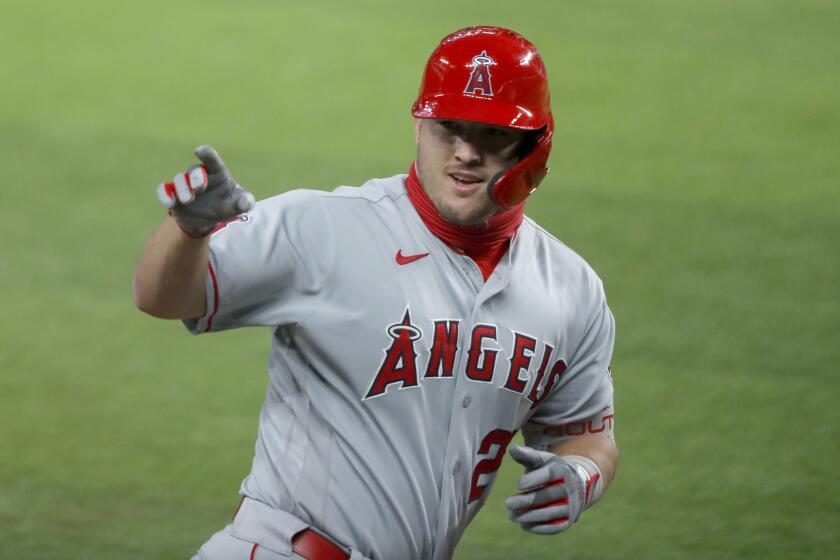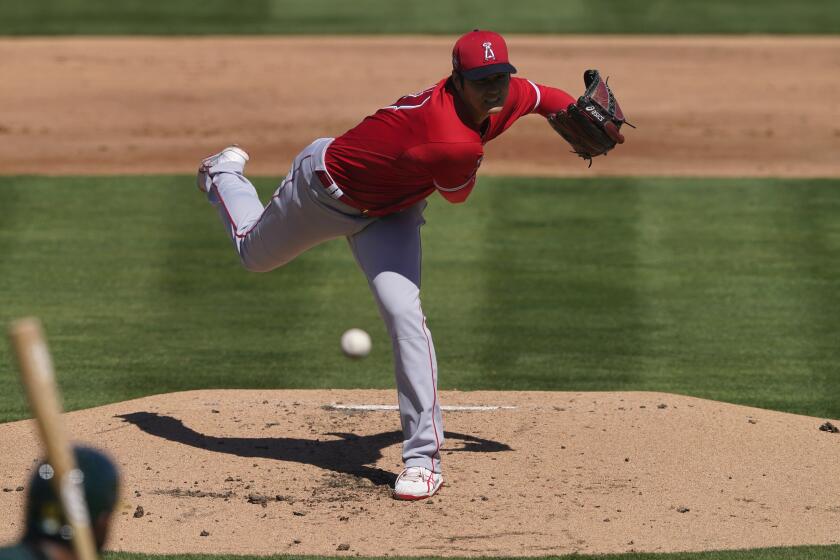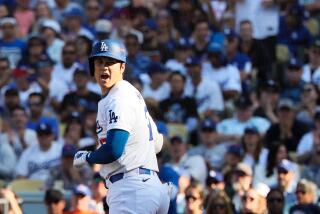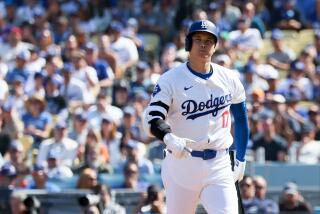Inventive ways to maximize Angels two-way star Shohei Ohtani’s starts and swings
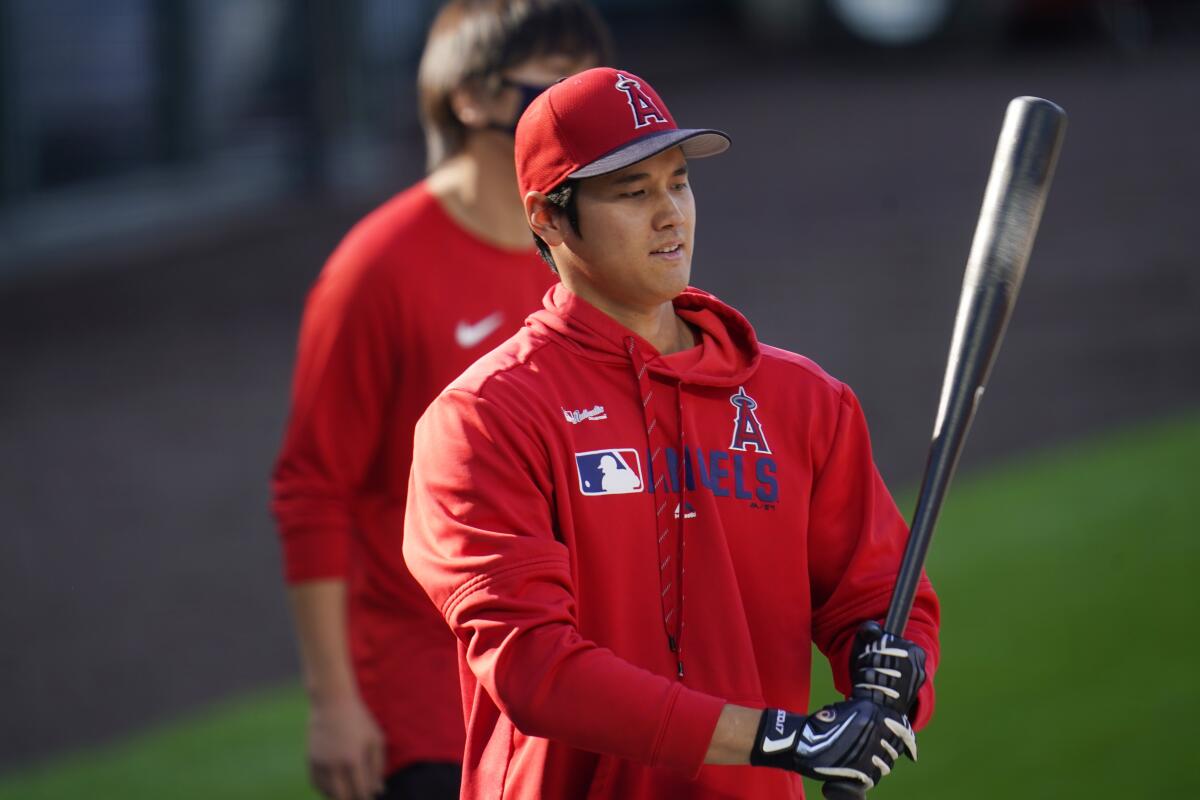
- Share via
TEMPE, Ariz. — For a fleeting moment, at the height of Shohei Ohtani’s sensational rookie season in 2018, it was one of the most debated topics in all of baseball:
What was the correct balance of hitting and pitching for the Angels’ two-way star? And where was the line between maximizing his value and protecting him from injury and fatigue?
Some suggested Ohtani should focus only on one. Others predicted his combined output could reach historic levels. But the conversation quickly quieted after Ohtani’s elbow injury in June 2018.
Since then, he has pitched just four regular-season innings and been relegated largely to hitting.
But now, three years later, Ohtani’s sensational spring training — he is hitting .600 in the Cactus League with four home runs and has 14 strikeouts in eight innings on the mound — is raising those questions all over again.
“He’s on a mission, absolutely,” manager Joe Maddon said. “I think you can all see that, both on the mound and at the plate.”
Angels superstar Mike Trout has found hitting drills — including some Shohei Ohtani uses to refine his swing mechanics — that have helped his preparation.
The Angels have yet to commit to many specifics regarding Ohtani’s usage during the season. The right-hander will pitch on a normal cycle in the team’s six-man starting rotation and serve as the designated hitter between outings.
But Maddon also emphasized the need to communicate with the 26-year-old and make decisions based on how he feels.
Echoed Ohtani, through his translator: “We need to [play it] by ear throughout the year, make sure my arm is holding up strong.”
Several computer projection systems have calculated what Ohtani’s season could look like, predicting him to hit in 112 to 124 games with as many as 500 plate appearances. On the mound, he’s projected for about only 12 to 18 starts with less than 100 innings.
If he stays healthy, though, Ohtani is planning to pitch much more frequently.
On Sunday, he said he could be slated for close to 30 starts (if he were to pitch every sixth game the entire season, he would start 27). Even though that would represent a massive workload increase from the two outings Ohtani made in an injury-shortened 2020 season, Maddon said it is nonetheless possible.
“We’re not putting any limitations,” Maddon said. “I love that he’s thinking that way.”
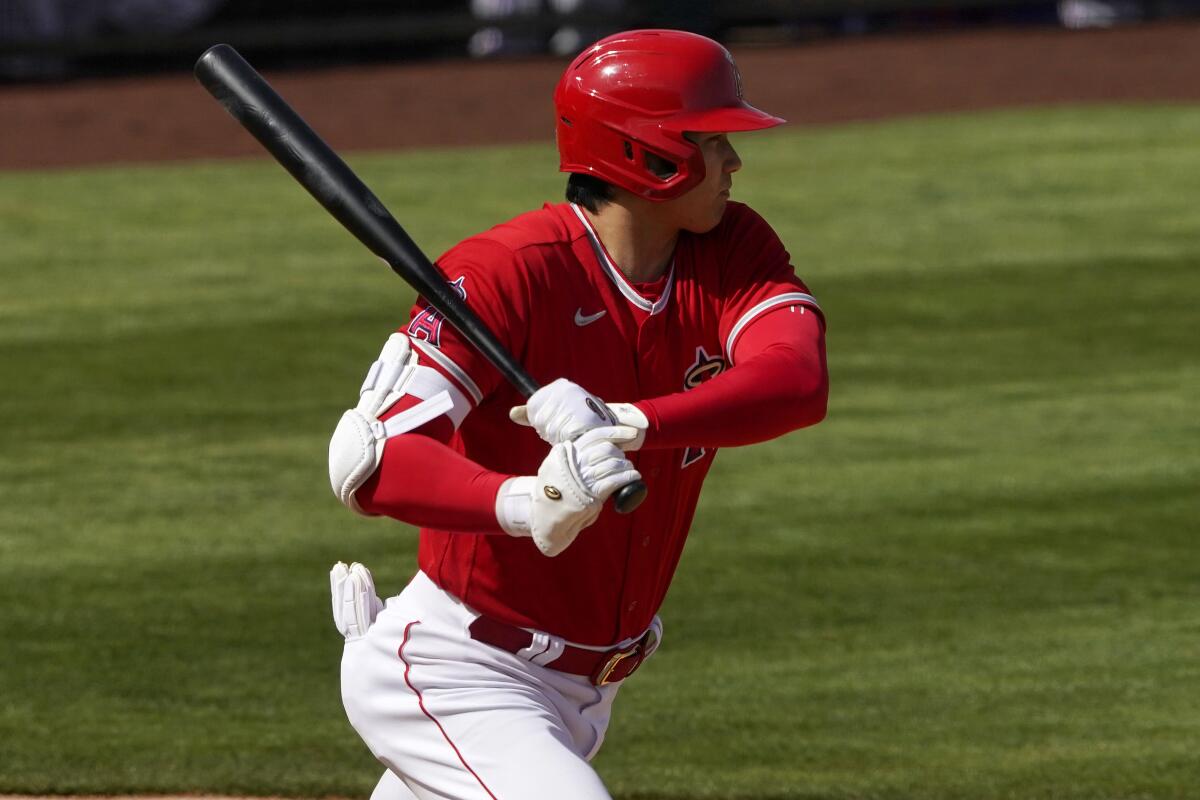
The more starts Ohtani makes on the mound, however, the fewer at-bats or off days he might be able to get.
During the opening two months of his rookie season — before suffering the elbow injury that ultimately required Tommy John surgery — Ohtani started on average once every seven games, with one or two days without hitting before and after each outing. He never hit the same day he pitched.
If the Angels were to replicate that kind of schedule this year, Ohtani would be in the batting order only half the time at most, meaning closer to 300 plate appearances.
That’s a scenario Maddon seems to want to avoid.
“If you had to shut him down [at the plate] for three games — the day before [his start], the day of, and the day after — woof, that’s a bad thought,” Maddon said. “So I think it’s important that we experiment right now. Because it’s all about how he feels. It’s not about how I feel.”
The Angels tested an alternative Sunday, when Ohtani hit and pitched in the same game for the first time in his MLB career. Doing that during the season could allow Ohtani to take off days before and after each start, while also giving him extra opportunities to contribute offensively.
Ohtani pulled double duty regularly in Japan’s Nippon Professional Baseball, especially during a 2016 most-valuable-player season in which he posted a 9-1 record in games he also batted. He said he didn’t feel extra fatigue after his two-way appearance Sunday. And Maddon said Ohtani wasn’t unusually sore the next day.
Shohei Ohtani pitched and hit in the same game against the Padres — and did both well — offering a tantalizing glimpse of what the Angels season might hold.
“I saw an absolute calm in his entire performance,” Maddon said. “When you’re so absorbed in both ends of the game, you don’t have enough time to talk yourself out of pitching well or talk yourself out of hitting well. He’s just playing baseball.”
Regarding how the Angels might space out Ohtani’s off days, Maddon hinted earlier this spring that resting Ohtani the days before he pitches “might be prudent.” Hitting on the day after he pitches would depend on how he feels.
These are all desirable dilemmas though, reminders that Ohtani is beginning to play like the Angels’ most versatile weapon once again.
“There’s no finite anything,” Maddon said. “Let’s go play. Talk to me. What do you got? Then we’ll take it from there.”
More to Read
Go beyond the scoreboard
Get the latest on L.A.'s teams in the daily Sports Report newsletter.
You may occasionally receive promotional content from the Los Angeles Times.

